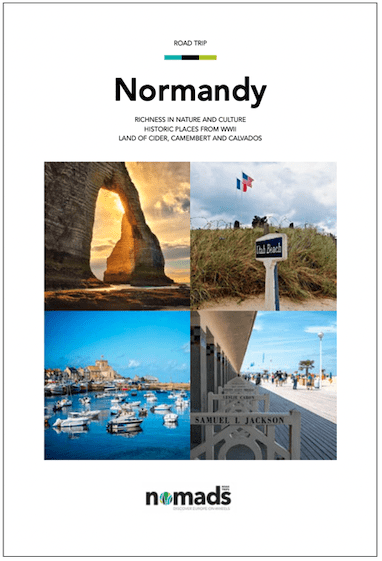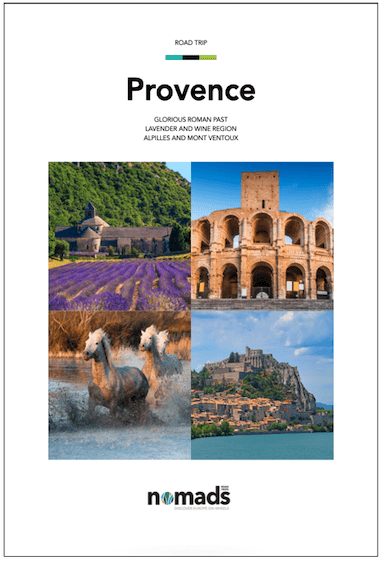
Provence
This 668km road trip through Provence starts in the lesser-known Alpes-de-Haute-Provence and travels from there to sunny Vaucluse. Fruit farms, olive groves and truffles take us to the wild white horses of the Camargue. Then the road takes us to the Côtes-du-Rhône wine region and the Roman past of Avignon and Orange. Finally, we also visit the giant of Provence: Mont Ventoux.
Highlights along the way include the spa town of Digne-les-Bains, the Luberon National Park, typical Provençal villages like Roussillon or Gordes, the lavender blossom, the various Roman constructions, the Camargue wetlands, the cities of Avignon and Nîmes as well as Mont Ventoux.
- Perfect travel companion if you want to discover Provence by motorhome, car or motorbike
- Clearly organised into 7 stages with 52 places of interest, travel tips, 21 hiking routes, 19 cycling routes, local tourist services and places to stay (102 campsites and 50 motorhome sites)
- Available as PDF (travel guide 75 pages) in beautiful design, illustrated with inspiring texts and high-quality photography
- Includes interactive map for PC, tablet or smartphone so you have all information at hand on the road
- Includes GPX files so you can download the full route and all cycling and walking routes onto your GPS
Read the first chapter
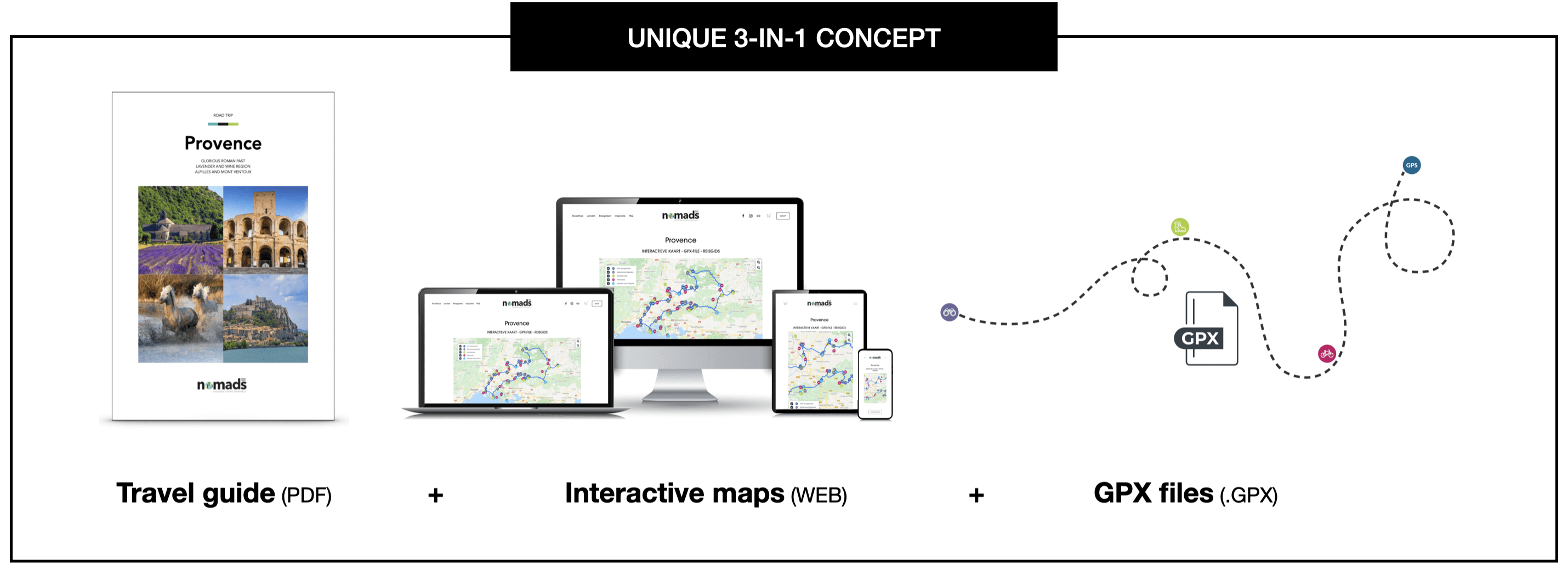
Some highlights on this road trip
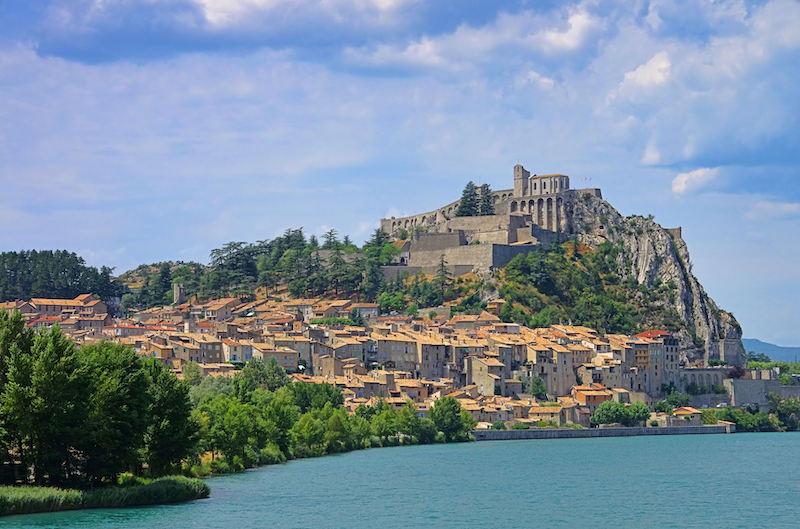
Alpes-de-Haute-Provence (Sisteron - Gréoux-les-Bains)
We start our road trip in a lesser-known part of Provence, namely in the Alpes-de-Haute-Provence department. This region is a fairly unspoiled part of Provence. It is almost self-evident that we start our road trip in Sisteron, 'the gateway to Provence'. The town is surrounded by olive trees and is situated in a narrow part of the Durance valley. Throughout the centuries, Sisteron has always been of strategic importance and is therefore surrounded by defences. It is impossible to ignore the 13th century citadel. The capital of the region, Digne-les-Bains, is famous for the cultivation of lavender. The city does not call itself 'la capitale des Alpes de la lavande' for nothing. The pure, healthy air has made Digne a beautiful, old spa town since Roman times.
From Digne-les-Bains, the road takes us to Les Pénitents des Mées, one of the most fascinating geological phenomena in the area. The continuous row of rocks, over 100 metres high, stretches for 2 kilometres and dominates the wide surroundings. We leave the region via Gréoux-les-Bains, where the healing hot springs have worked wonders since ancient times.
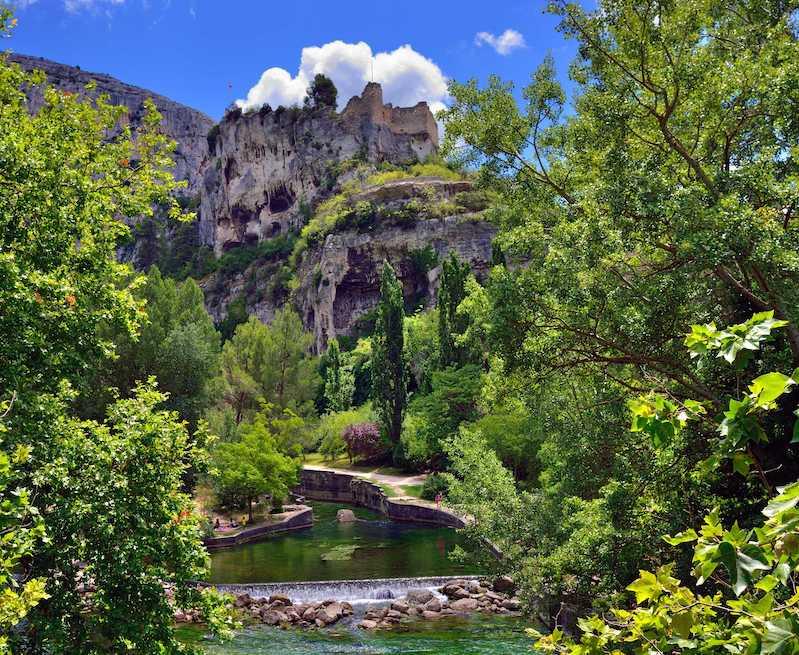
Gréoux-les-Bains - Fontaine-de-Vaucluse
We are approaching the heart of Provence: Vaucluse, the region of wine and lavender, truffles and melons. We decided to explore the Luberon area in particular. We drive through Parc Naturel Régional du Luberon and visit some villages. The first one on the road is Apt, with a small stop in Saignon. Apt immediately puts you in a holiday mood. On the central square, the inhabitants play a game of boules under the plane trees. The city made its name because of truffles, candied fruit, lavender essence and pottery. There are also several interesting museums here.
In Lacoste, a footpath leads to the ruined castle of Marquis De Sade. Roussillon is the place to go for the striking deep red earth that makes the village so warm, harmonious and inviting. Gordes, on the other hand, is a very popular village at the foot of the Renaissance Château de Gordes and the Église St-Firmin. Enjoy its beautiful location and wander through the narrow medieval alleys.
Finally, we drive to Fontaine-de-Vaucluse, where the river Sorgue rises. The famous Italian poet Petrarch lived here, where he transformed his unrequited love for Laura of Avignon into beautiful sonnets. His house is now the Musée Pétrarque.
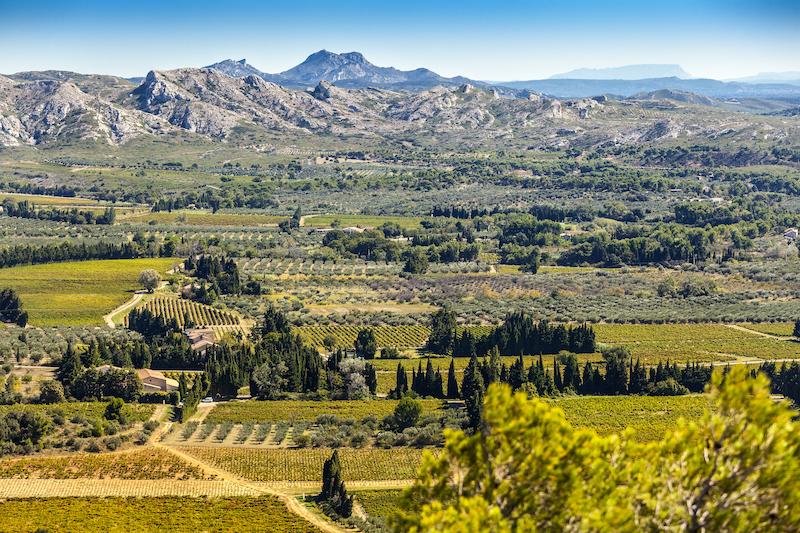
Fontaine-de-Vaucluse - Arles
The city of Cavaillon is beautifully situated between the mountain range of Les Alpilles and the Luberon, which stands out against the Mont Ventoux. In the area around the town you will find numerous fruit and vegetable farms. In Cavaillon, you can learn more about the Roman past of the region through remains and the Musée Archéologique.
St-Rémy-de-Provence is the perfect place to explore the Alpilles. You'll be amazed on the road from Cavaillon to St-Rémy.
On to the Bouches-du-Rhône department, but before driving on to Arles, it is worth stopping in Les-Baux-de-Provence, situated on a spur of Les Alpilles. From here you can already see the Camargue. In Arles, it is impossible to ignore the city's Roman past. Although founded by the Greeks, it was the Romans who made Arles a 'little Rome'. Les Arènes is one of the largest and best preserved buildings in Provence. The oval theatre was the largest Roman building in Gaul.
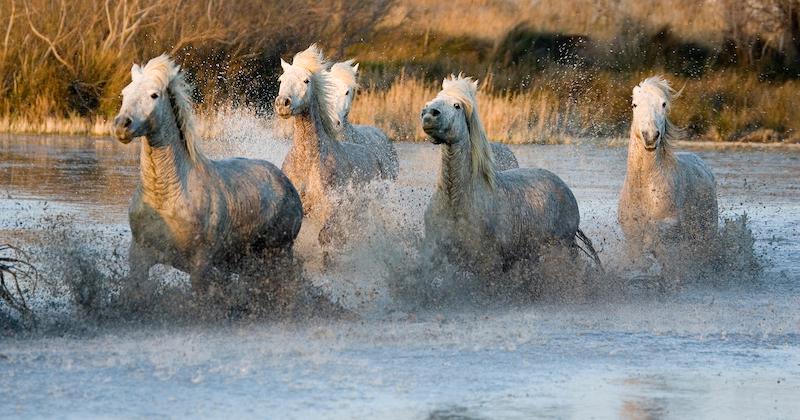
The Camargue (Arles - Nîmes)
The Camargue is the sparsely populated delta area at the mouth of the Rhone. For centuries, gypsies and cowboys have lived here, herding the wild horses and bulls. The 140,000 ha of salt marshes, lakes, meadows and dunes make the Camargue one of the most important wetlands in Europe. Famous are the black bulls herded by the gardians and trained to participate in bullfights. The wild horses of Camargue are direct descendants of prehistoric horses. Flamingos are also an integral part of this area.
Do not limit your route to the road between Arles and Saintes-Maries-de-la-Mer, but discover all the beauty that this nature area has to offer. Saintes-Maries-de-la-Mer, named after three Mary's, is the most touristic place in the Camargue. It has a cosy centre with many restaurants and cheerful shops. Hiking and cycling paths are also abundant. A stop in Aigues-Mortes is also a must. The city has hardly changed since its construction in 1300.

